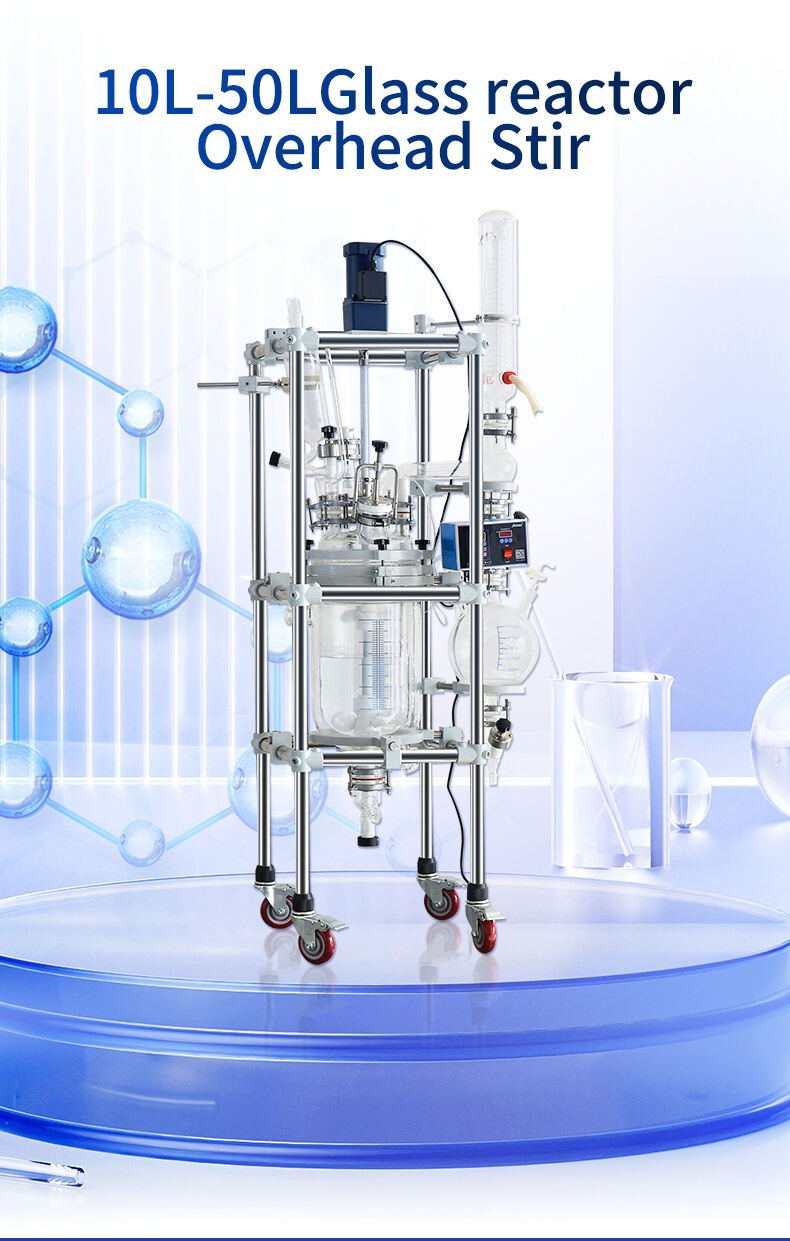
A glass reactor is a reaction vessel made of glass, usually designed with a double or triple layer structure. Its inner layer is used to contain the reaction material, while the outer layer is used to circulate the heating or cooling medium for precise control of the reaction temperature. It can be operated under atmospheric pressure, negative pressure or vacuum and is equipped with a stirrer to promote mixing of reactants and reaction efficiency.
Main Features
Transparency: The glass material makes the reaction process completely visualized, which is easy to observe the color change, phase change, etc. in the reaction.
Chemical resistance: high borosilicate glass has excellent chemical inertness and can resist the corrosion of most chemical reagents.
Wide temperature control range: the glass reactor can work in the temperature range of -80℃ to 300℃, suitable for both high and low temperature reactions.
Pressure control capability: capable of operating under atmospheric pressure, negative pressure or vacuum conditions, suitable for a wide range of reaction needs.
Versatility: It can be equipped with a variety of accessories, such as condenser, thermometer, reflux device, etc., to meet different experimental needs.
Working Principle
The working principle of glass reactor is mainly based on its unique double-layer structure and temperature control mechanism:
Temperature control: The materials inside the reactor are heated or cooled by injecting a constant temperature heating or cooling medium (e.g. hot water, thermal oil, frozen liquid, etc.) into the sandwich of the reactor. The rotation of the stirrer circulates the medium in the jacket to further improve the efficiency of heat transfer and ensure the uniform temperature inside the reaction kettle.
Stirring and mixing: The stirrer inside the reaction kettle is driven by the mechanical transmission device, so that the reactants can be fully mixed to accelerate the reaction speed, and at the same time to prevent local overheating or overcooling.
Pressure control: The reactor can control the internal pressure by vacuum or inert gas, which is suitable for the reaction that needs to be carried out under specific pressure conditions.
Fields of application
Glass reactors are widely used in the following fields:
Chemical synthesis: for synthesizing organic compounds, inorganic compounds, etc.
Pharmaceutical industry: for drug synthesis, extraction and purification.
Biotechnology: for biochemical reactions, cell culture, etc.
Food industry: for synthesis of food additives, extraction of natural products, etc.
Education and research: as an important equipment in teaching and scientific research experiments.
Advantages
Chemical resistance: applicable to a wide range of chemical reactions.
High transparency: easy to observe the reaction process.
Precise temperature control: applicable to a wide range of temperature conditions.
Easy to clean: smooth glass surface, easy to clean.
Versatility: can be adapted to a wide range of reactions and process requirements.
Limitations
Fragility: Glass is relatively brittle and requires careful handling.
Pressure limitation: not suitable for extremely high pressure reactions.
In conclusion, glass reactors are versatile and efficient laboratory equipment that provide an ideal environment for chemical reactions and are indispensable tools for modern chemistry, pharmaceuticals and biotechnology.
 Hot News
Hot News2025-08-06
2025-07-30
2025-07-18
2025-07-07
2025-06-06
2025-05-15